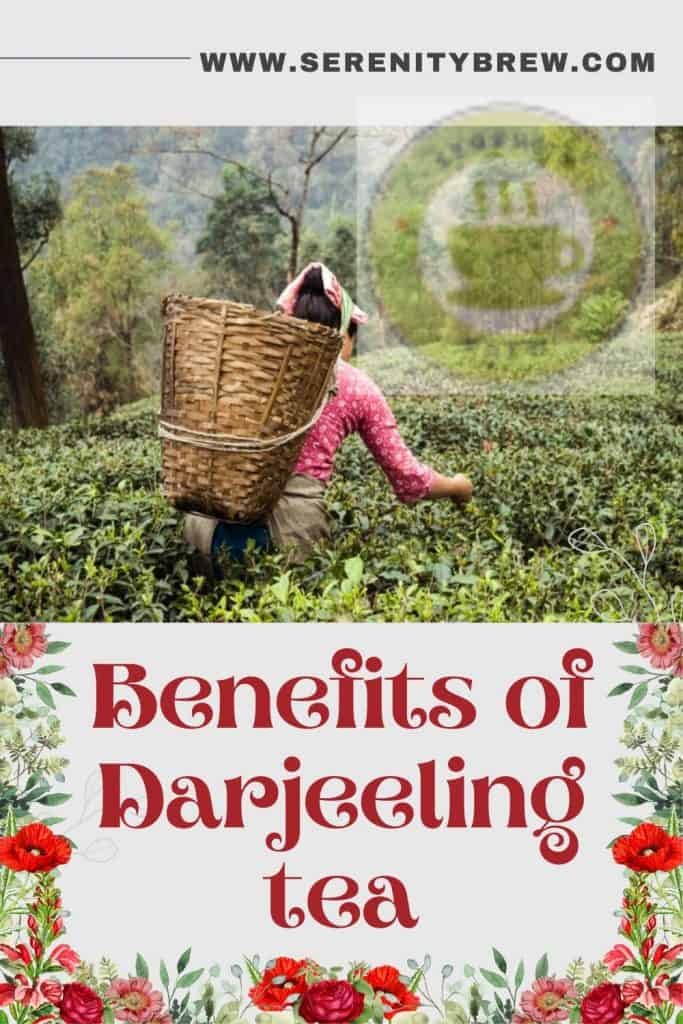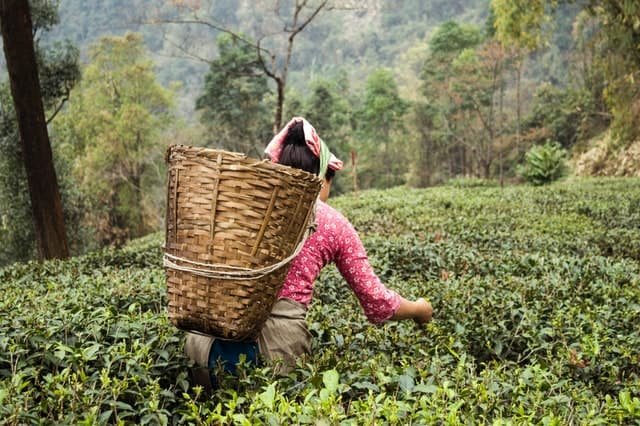
Legend has it that in the Himalayas lives the deity Shanker Mahadeva who blows on the tea plantations to cool them and creates the mist that gives Darjeeling tea its unmistakable quality and flavor.
Tea grown in Darjeeling breathes the Himalayan climate and is considered one of the best in the world. It is sometimes referred to as the champagne of teas. Let’s see why.
Cultivation and elaboration
Grown between 600 and 2,000 meters high near the Himalayas, this variety of tea is named after the city of Darjeeling, in northeastern India. In the surroundings of said city are the 87 plantations that produce Darjeeling tea, an intense and floral variety, whose flavor is largely due to the area’s climate, with high sun exposure.
Its preparation is made from the shoots of our beloved tea plant, the Camellia sinensis, after hand-picking and controlled oxidation.
Traditionally, most of the harvest is used to make black tea, however, plantations now also produce green and white tea. Darjeeling tea is also used to give a distinctive touch to many blends or teas.
It is important to note that the production of Darjeeling tea is regulated by a Geographical Indication. Just as champagne is unique to the Champagne region of France, Darjeeling tea can only be produced in this region of India. This comparison to restrictions on champagne production played a major role in popularizing the saying that Darjeeling is the champagne of teas.
It is believed that there are numerous counterfeits of Darjeeling tea throughout the world. This is inferred from the differences between production quantities and sales quantities. For this reason, we recommend that you pay special attention to the Darjeeling certification when buying this variety of tea.
The taste of Darjeeling
As we have already mentioned, Darjeeling tea has an intense flavor, with hints of flowers. These teas are often described with adjectives such as syrupy, smooth, round, sweet, and brisk.
Darjeeling is also the birthplace of a famous and exquisite white tea, whose aromas are reminiscent of muscatel and dried fruit.
In the cup, its infusion is soft amber in color, while in the mouth a certain astringency can be seen from its tannins, which makes the drink refreshing and full-bodied.
The different harvests play a determining role in the flavors of the tea. Three different vintages are usually produced in Darjeeling, which are called flush in tea parlance.
- Spring harvest ( First Flush), where a tea with a bright color and floral aroma is produced.
- Summer harvest (Second Flush), which results in a strong tea with hints of nutmeg.
- Autumn Harvest (Third Flush), which produces a milder tea, sometimes with a slight hint of pepper.
The time of harvest added to the selection of the leaves and the elaboration process that they receive will define the final flavor of the Darjeeling tea that you taste.
Properties of Darjeeling tea
All true teas, those produced from Camellia sinensis can offer you their health benefits. Darjeeling tea is no exception.
Stimulating effect
If you feel like you need to start your day with caffeine but would like to reduce your daily intake, perhaps tea is the best option. While both tea and coffee contain caffeine, they do so in different amounts: a cup of espresso has 212mg/100g while a cup of black tea contains approximately 20mg/100g.
In addition, the caffeine in tea is absorbed more slowly and, therefore, its stimulating effect would last longer. On the other hand, a scientific study has indicated that beverages containing caffeine, such as tea, would have a positive impact on concentration.
Protect the heart
Teas are rich in substances called flavonoids, which have been associated by numerous investigations with the reduction of cholesterol and blood pressure, two of the main risk factors for cardiovascular diseases.
Antioxidant effect
Tea leaves contain polyphenols, components with an antioxidant effect that fight free radicals, helping to protect our cells from damage caused by premature aging and chronic diseases.
The elaboration process of the different types of tea affects its concentration of antioxidants. The lower the oxidation process, the higher the concentration of these. For this reason, white tea would have greater properties in this regard.
Lose weight
Tea has been used as a dietary supplement for a long time.
Currently, it is recommended to opt for green tea, although some research indicates that white tea would have even greater power to accelerate metabolism.
In any case, all varieties of tea contain flavonoids and these substances would be responsible for helping to speed up metabolism, allowing weight loss, always accompanied by a healthy diet and regular physical exercise.
On the other hand, if you’ve lost weight and want to keep it off, tea might help you by preventing your metabolism from slowing down.
Enjoy the aromas of the Himalayas

Darjeeling tea is not only delicious and aromatic, but also a good option to reduce caffeine consumption, without losing its stimulating effect, and also offers interesting health benefits.
Do you fancy a cup?
